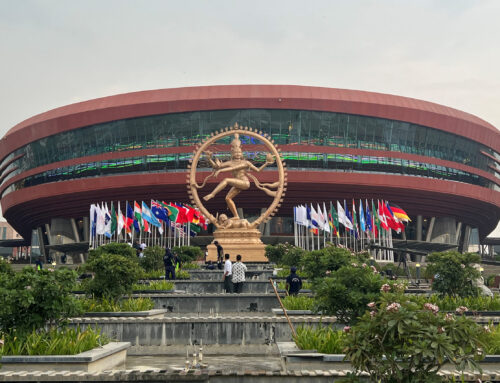Comment: How do terrorists finance their operations?
G20 leaders have pledged to tackle the sources of terrorism. And it is a statement of fact that terrorists groups cannot operate & flourish without financing.
Terrorist financing comes from both legitimate and illegitimate sources.
Legitimate sources include cash and electronic transfers of untainted funds & resources that end up supporting terrorist infrastructures and operations by providing food & housing, flights, raw materials to create explosives, and donations to support recruitment drives, training, and payment for items that are not provided by others. Charities have been identified as being particularly vulnerable to acting as vessels of legitimate sources of financing for terrorist organizations.
In addition to legitimate sources of financing, terrorism is also funded by dirty funds that are raised through illicit activities such as the sale of drugs, endangered species and counterfeit products. These proceeds of crime are subsequently laundered through the formal financial system, including money service businesses, and parallel remittance channels such as hawala banking. Global Financial Integrity has highlighted that the line between criminal and terrorist financing networks are becoming increasingly blurry, with terrorist groups tapping into the estimated $650 billion criminal market economy of the trade of guns, goods and people.
Additionally, kidnap for ransom is a key source of funds, with the UN estimating that an estimated $120million was paid to terrorist groups between 2004 and 2012. The table below provides a breakdown of recipients of funds engaged in kidnap for ransom activities as per data provided at a Special Meeting of the Counter Terrorism Committee on Kidnap for Ransom held at the United Nations on 20 November 2014:
|
Terrorist Organization |
Amount |
Timeframe |
|
AQAP |
USD 20 million |
2011 to 2013 |
|
AQIM |
USD 75 million |
2010 to 2014 |
|
Boko Haram and Al‐Shabaab |
Millions |
2014 |
|
ISIL |
Between USD 35 million and 45 million |
2013-2014 |
|
Abu Sayyaf Group |
USD 1.5 million |
Unknown |
According data held by to security firm AKE Group, an average westerner can be ransomed for $3.75m.
With the advent of technology, terrorist groups are also employing innovative ways of raising funds. The FATF identified in its typologies report issued in February 2015, that terrorist groups are conducting a marketing campaign through virtual networks to encourage donations through crowd funding techniques. Also, with emerging peer to peer payment technologies available via social media are also at risk of misuse by terrorist networks.
The Economist has called Islamic State in Iraq and the Levant (ISIL) “one of the best financed terrorist organisations in the world.” From a drive seized by authorities in 2014, it was identified that ISIL holds cash and assets amounting to over $2billion. ISIL has adopted a unique financing model based on the sale of oil (in 2014 worth approximately $800 million) and other raw materials and antiquities, the seizure of cash at state-owned banks, a levy of tax on businesses operating in its regions, and basic fundraising activities from supporters and donors.
Given the vast amounts of funds flowing in and out of both the legitimate and illegitimate financial systems, international coordination is essential to strike at the heart of terrorists groups. And this should not only include increased engagement with international organizations, such as the FATF, Interpol and the United Nations, but also the private sector with greater sharing of information and use of new technologies to carry out trends analysis and identify key source and destination spots. This could allow for the detection and seizure of legitimate assets in transit to terrorist groups and the freezing of assets flowing back to Western and other countries to carry out terrorist atrocities.
16 November 2015
Originally published on G20 Research Group
Download “2015 Nov16_How do Terrorist Finance Their Operations.pdf”
2015-Nov16_How-do-Terrorist-Finance-Their-Operations.pdf – Downloaded 831 times – 188 KB




